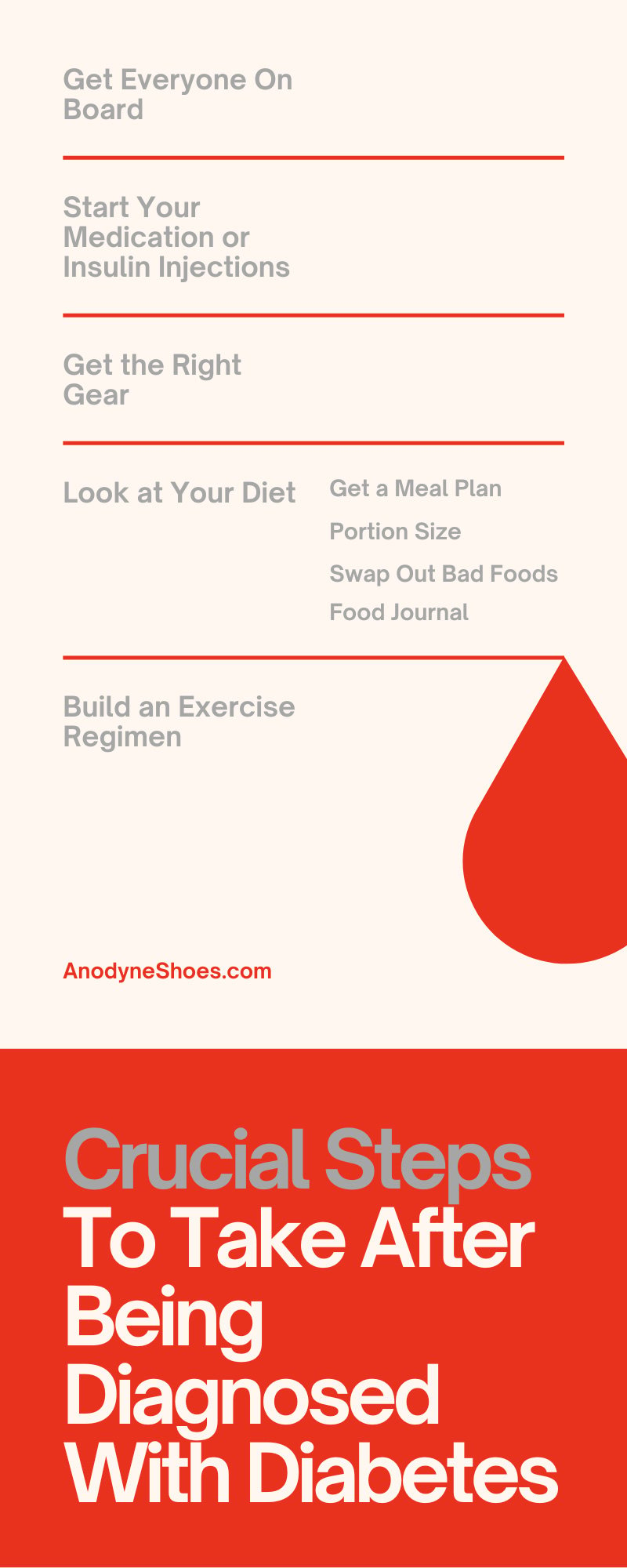Getting diagnosed with diabetes is tough. You must make many changes, including how you exercise, which foods you eat, and more. So, where do you even start? This may be a whole new world for you. Don’t worry. We’ll walk you through what to do after being diagnosed with diabetes here. Diabetes isn’t a death sentence. It’s tough but extremely manageable if you know what to do. We know it’s hard, but we have everything you need to get started on your wellness journey.
Get Everyone On Board
One of the first things you need to do is onboard everyone associated with your well-being. Diabetes rarely has a stigma attached—most people recognize it simply as a health condition. Because of this, we understand that you can be more open about it than you normally would. We don’t expect you to shout your condition from the rooftops but telling key people in your life can help you succeed.
Make sure you notify your job and school if you need accommodations. Do you need a place to store your insulin needles? Do you need extra sick days if you require hospitalization? What do medical leave scenarios look like for your job or school?
Another factor some overlook is notifying their psychiatrist or psychologist—if they have one. Sometimes the medication your psychiatrist prescribes can clash with Metformin or other diabetic medication you might be on, which is why it’s important to let them know. They can work around this.
Let your entire healthcare team in on your recent diagnosis, including your podiatrist, nutritionist, and any disability office available to you—not just your doctor. If the right people know about your condition, they can help you in ways you may not expect.
Start Your Medication or Insulin Injections
Starting your medication or injection regimen needs to be a priority. Medication is simple enough to handle. Get a pill bottle to manage your intake so you don’t miss a dose—or take multiple doses—by accident. Make sure your pill bottle is in a memorable place, and always record how you feel after, especially in the first few weeks of use. Journaling the nuances of your condition is something we’ll return to again and again in this article, as it’s something you’ll likely do for the rest of your life. Note the dates and general times you take your medication or do your injections. Set an alarm if you need help remembering. Soon it’ll become second nature, and you won’t have to note anything down after that.
Get the Right Gear
Having the right accessories, especially as you travel, is paramount. Diabetic slippers for women and men are imperative, especially since people with diabetes tend to bruise and heal much slower than others. Get your hands on a good pair of diabetic shoes to wear around the house. While you can certainly get by with other kinds, shoes for people with diabetes have features such as a depth for insoles and easy lacing—if any—around the ankle. They also have a greater softness and provide more comfort while possessing a ton of durability. Additionally, you’ll want a simple and memorable place to store your diabetic accessories, such as a carrying case. Whatever you pick, make sure it’s small and easy to store.
Look at Your Diet
Dietary alterations will have one of the greatest impacts on your condition. Diet heavily influences your mood and often your blood sugar and glucose levels, making them plummet or get dangerously high. Changing your diet could save your life. Follow our tips below, and you’ll have fewer surprises. This is a crucial step you must take after you’re diagnosed with diabetes.
Get a Meal Plan
First, you need to establish a meal plan. A meal plan tells you what to eat, how much you should eat, and when. When you first get diagnosed, your doctor is typically the one who gives this to you. While it’s important to follow this to the “T,” we understand that major or sudden lifestyle changes are difficult. If you’re having trouble, start implementing the changes little by little. Cut sugar from your coffee or use a substitute sweetener. Incorporate more fruits and veggies into your diet. Also, cut your portion sizes. You don’t necessarily have to overhaul your whole life immediately, but you must start making changes now.
Portion Size
Your doctor will include portion sizes as part of your meal plan. Portion sizes are the amount of any given food group you should have at each meal. For instance, your doctor may recommend eating only a fistful of nuts and grains with fruits and vegetables daily. Portion size is important because we tend to pile food on our plates when we’re hungry. A nifty trick to stop this behavior—which we often do subconsciously—is to buy smaller dishes and reduce the number of big ones. You can’t pile a ton of food on your plate if the plate is too small to accommodate.
Swap Out Bad Foods
This point is a no-brainer. You need to swap out bad foods for good ones. We touched on this briefly in our point about the meal plan, but the idea is to slowly remove bad foods from your diet. That said, there will be some foods that you should stop eating immediately. Fast food is a good example. You also can’t afford to eat junk food. A better substitute for this is cooking at home rather than eating out. You should avoid fried foods as well. Try substituting fried chicken for baked chicken.
Food Journal
Keep a food journal in the same journal in which you place your blood sugar readings. Doing so helps you know how many calories you intake, which foods you eat, and how they affect your blood sugar. The best times to journal are upon waking up and an hour after each meal. Food journaling gives you an idea of what’s happening in your body, which is indispensable to the process.
Build an Exercise Regimen
Discuss your diagnosis with your doctor before building your exercise regimen, as they may have some recommendations. In the meantime, start small. Exercise one or two days a week for a few weeks, then increase the frequency. Make sure you don’t do a lot of high-impact aerobic exercises involving heavy movement. Keep high-impact exercises, such as jumping and running, at a minimum since your feet bruise easily. Remember, exercise lowers your blood pressure and blood sugar, so don’t skip it.
Managing diabetes is possible, especially if you use these tips. If you’re ready to start your journey, you’ll need to get the right gear for the job. At Anodyne, we offer the best selection of diabetic shoes and socks that you can imagine. Shop our collection today!



.png?width=750&height=422&name=Untitled%20(4).png)
.png?width=116&name=Anodyne_circle_1_logo%20(2).png)
